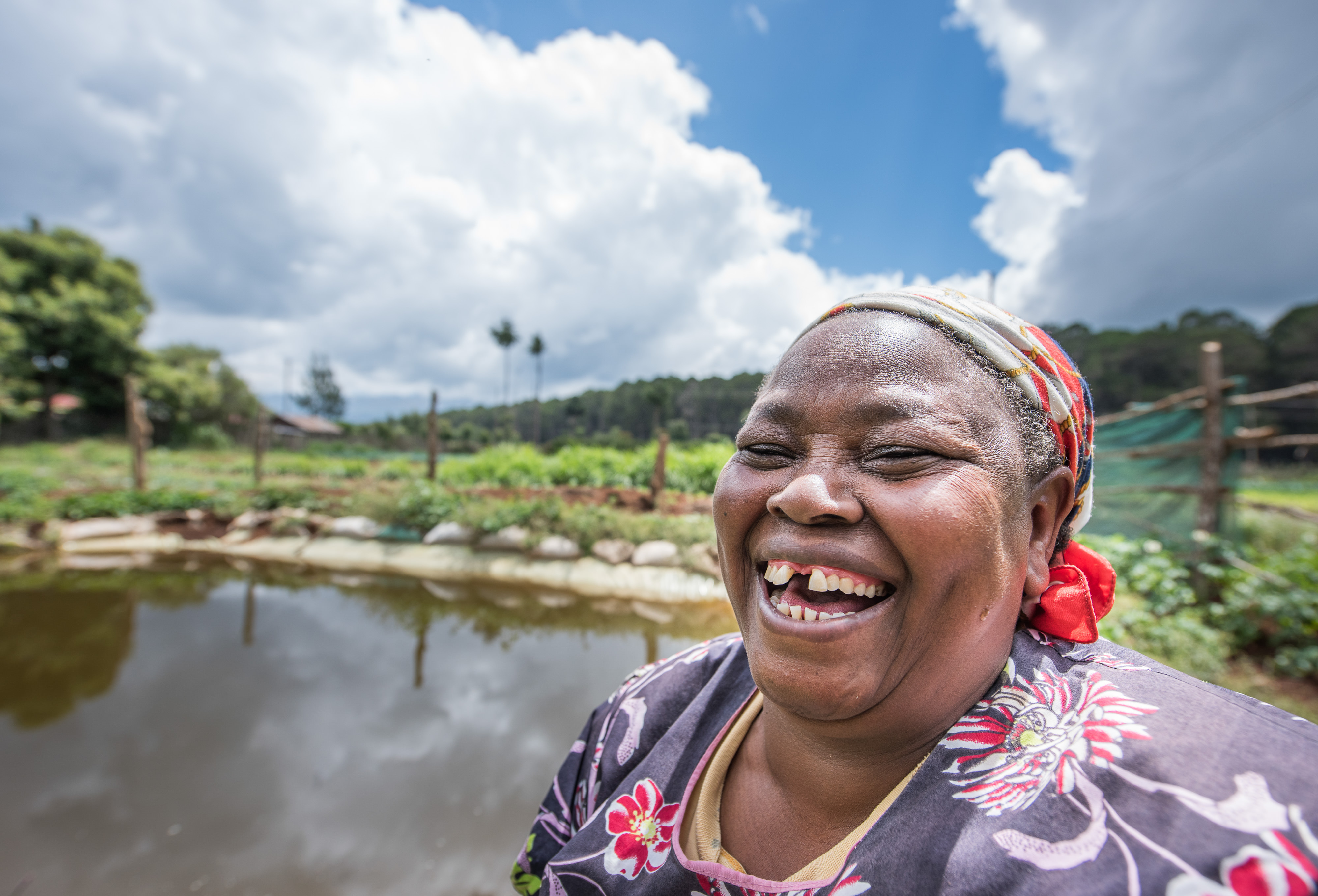Water Funds in Africa
Nairobi and Cape Town to Serve as Models for Water Funds Across the Continent

High on the hillsides north of Kenya’s capital, more than 15,000 farmers are terracing fields, planting trees, and digging rainwater storage ponds to conserve water and keep their farms' soil out of the river that supplies Nairobi with much of its drinking water and energy.
In the flatlands outside Cape Town, South Africa, above an aquifer that is critical to the supply of water for that dry city, a small team of women are pulling up non-native, water-thirsty plants that are taking excessive amounts of moisture from the ground.
In both cases, these activities to restore natural ecosystems are funded in part by the very people who rely most on the precious water those environments supply: businesses and water users in the cities downstream.
This is The Nature Conservancy’s Water Fund model.
INVESTING IN NATURE
As populations grow, economies boom, and the climate changes, watersheds that naturally help power progress and give people water are coming under extreme pressure.
Nairobi needs nearly four times more water than it did 15 years ago, and every day more than half of the city’s 4 million residents can’t access enough water. In Cape Town, acute shortages have forced authorities to limit people to 50 liters per day: barely enough for a four-minute shower and two toilet flushes.
Science shows that preventing problems at their source by investing in nature’s own supply chains — “green infrastructure” — is often more cost-effective than upgrading “grey infrastructure” like dams and reservoirs.
Water funds create a system through which municipal utilities and businesses can invest in the source of their water upstream. But it’s not just downstream stakeholders that are investing in these protection and restoration initiatives: The proven water fund model has attracted outside funding as well, from public funding agencies, as well as private foundations and donors. In the case of the Upper Tana-Nairobi Water Fund, interventions such planting trees, creating riparian buffer zones, and teaching farmers terracing techniques are creating an improved water supply, a healthier freshwater ecosystem, and improved livelihoods for farming families.
TAKING IT TO SCALE
The Nature Conservancy launched its first water fund in Quito, Ecuador, in 2000, and since then has proven the formula in more than 30 cities around the world. The Upper Tana-Nairobi Water Fund became the first water fund in Africa in 2015. In 2016, the city of Cape Town invited TNC to explore establishing a Water Fund to help address long-term water security concerns while tackling near-term social and ecological priorities. The Greater Cape Town Water Fund officially launched in late 2018.
In order to determine where to go next, TNC scientists assessed the potential for watershed conservation to benefit cities, rural livelihoods, and nature across 30 large cities in Sub-Saharan Africa that are primarily dependent on surface water supply. The Sub-Saharan Africa's Urban Water Blueprint found that 28 cities could improve their water security by investing in conservation activities such as forest protection and good farming practices, which could benefit more than 80 million people. For half of the 30 cities, the resulting benefits for improved water quality could offset the costs of conservation activities through reduced water treatment expenses. What’s more, the source watersheds for 13 cities also overlap with some of TNC's highest priority areas for wildlife habitat.
But TNC can’t take on this growth alone. That’s why we’re sharing our two decades’ of experience on water funds globally with others who can replicate the model in cities across Africa. A recent seminar gathered together city managers, utilities, and landscape authorities from Port Elizabeth, Durban, and Cape Town in South Africa; Dar es Salaam in Tanzania; Mombasa in Kenya; Kigali in Rwanda; and Addis Ababa in Ethiopia. Others represented the Sebou River Basin in Morocco, and the Okavango Basin and Delta, which would be Africa’s first transboundary fund with authorities from Namibia, Angola, and Botswana. By 2025, we expect there will be 10 water funds operating or under development in Africa.
Zeleke Teferi, Head of Catchment Management for the Addis Ababa Water Agency, said what set TNC’s model for the Upper Tana-Nairobi Water Fund apart was how it united upstream farmers with downstream water users.
“The important thing is it brings together all the stakeholders — the farmers, the water users, and the water suppliers,” he said. “Other initiatives only considered one set of stakeholders. There was a disconnection, but here everyone is joined.”




